We’ve now completed a third rotation of the Player’s Handbook, meaning that almost every class has had every subclass from that book examined in the Class 101 series! Two classes with lots of subclasses—the cleric and wizard—will need a little extra time to cover. Starting this week, however, we’re moving away from the Player’s Handbook and taking a look at the brand-new subclasses that you’ll find in Tasha’s Cauldron of Everything!
The second new subclass from Tasha’s a beastly chap indeed: the Path of the Beast barbarian. Equipped with a monstrous, transformative rage, this subclass invites your character to be descended from archdruids or lyncanthropes, or possessed by a fey spirit. Join us as this beginner’s guide shows you the basics of how to play this wild warrior!
Check out the other articles in the Barbarian 101 series, like the broad overview of the entire class in Barbarian 101: A Beginner's Guide to Relentless Fury, or the deep dives into specific subclasses in Barbarian 101: Path of the Berserker, Barbarian 101: Path of the Totem Warrior, and Barbarian 101: Path of the Battlerager.
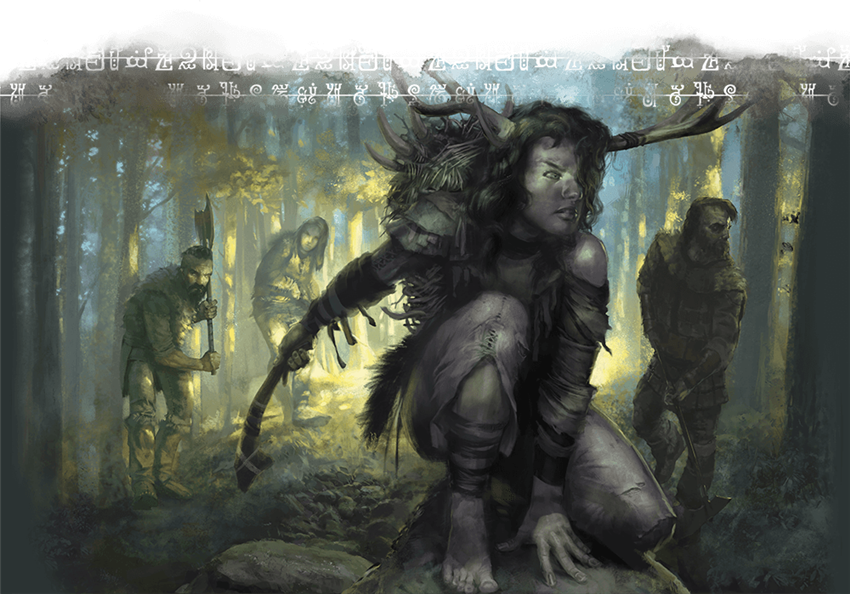
Story of the Path of the Beast
“Look upon her gleaming face, my son.” A woman with silver streaks running through her black hair, creases upon her pale face that spoke of many years of hard living and a jawline that hinted at her strength and bullish perseverance, perched on a clifftop beside her son. The sound of shouts echoed from the forest behind them, and red, flickering light danced in the distant heart of the woods. One of her rough hands rested upon her son’s shoulder as she looked up at the moon. His gaze followed hers. His build was lanky and thin, for he was only barely a teenager, but his mother was sure that in time he would grow into the power that both she and his father possessed.
Blood dripped from her lips, her fingertips, and from a raw gash across her chest. Her simple, green tunic hung open, and her wolf-gray undershirt was spattered with a dark splotches of blood mixed with sweat and mud. She spoke in a voice as cool as the night air around her and as unwavering as the moonlight that shone from above, yet the undercurrent of fear was as palpable as the iron scent of the blood upon her body.
“The moon is mother to all of our family,” she continued. Her son knew what was going on. Why the fires were burning in the forest, why the roar of battle echoed in the distance. He hung on her every word. He couldn’t take his eyes off his mother’s scarred face, even as she stared at the distant moon. “She keeps us strong. We pray to her for guidance, as our foremothers did—even in the times when we called our gift a curse.”
“Why is this happening?” the son asked his mother, tears welling in his golden eyes. His mother’s hand pressed harder against his back as she took a deep, painful breath in. Tears had begun carving a path down her stoic face, too.
“The people of the south, in their castles. Do you remember the stories I told you before bed?”
“When I was young.”
“When you were young,” she repeated. “Remember them. They have come for us. They don’t understand our family’s ways like we have come to.” She paused for a long time, savoring what she knew might be the last moments she would have with her child. A scream rang out in the night, and she turned to look upon her son’s face. He was crying. So was she. “Run. Run until you reach the town on the woods’ northern border. Pretend to be one of them, and run again when they learn. I will meet you again, in the mountains of your father’s country.”
She stood, and growled deep in her throat. Her eyes flashed in the moonlight and thick gray fur sprouted along her arms as her nails sharpened into jet-black claws. The barbarian turned once more to her son. Though her form had begun to change, her voice was the same. “The moon blessed our people. It is not a curse. I love you.” Then she was gone, vanished into the woods’ blazing shadows.
Path of the Beast Features
The Path of the Beast grants you a number of features that make you a flexible, hardy combatant skilled in unarmed combat. The barbarian gains access to four subclass features in addition to their barbarian class features, gained at fairly regular intervals at 3rd, 6th, 10th, and 14th level. You can read all of the Path of the Beast features in Tasha’s Cauldron of Everything. In summary, your subclass features allow you to:
- Gain a special, bestial attack while you rage by transforming your teeth into fangs, hands into claws, or growing a tail.
- Bypass damage resistances with your bestial weapons
- Gain a unique benefit to climb, jump, or swim with primeval power
- Curse the targets of your attacks with rabid fury
- Lead your party by granting them additional damage while you rage, and grant yourself temporary hit points for each member of your pack.

Benefits of the Path of the Beast
The Path of the Beast’s greatest strengths are—in addition to its well-balanced offensive and defense power—its versatility. Like many other subclasses in Tasha’s Cauldron of Everything, the Path of the Beast often grants you several options when you gain a subclass feature, and doesn’t lock you in to any one decision. Other subclasses in earlier books, such as the Path of the Totem Warrior barbarian, require you to pick a benefit and live with it for the rest of your adventuring career, but this subclass allows you to change up the combat benefits granted by your Form of the Beast feature whenever you rage, and alter the exploration benefits granted by the Bestial Soul feature whenever you finish a short rest.
The Path of the Beast is a strongly offense-focused subclass, with most of its abilities making it easier for you to deal more damage—sometimes in interestingly roundabout ways, such as forcing an enemy to attack one of its allies. Beyond this, the Path of the Beast is one of the barbarian’s most party-focused subclasses. While it’s not a particularly potent tank per se, since it lacks a way to discourage foes from attacking the barbarian’s allies, the subclass does grant you features that buff your allies and debuff your enemies, making it easier for your allies to fight with the same ferocity as you.
Drawbacks of the Path of the Beast
There’s a lot to love about the Path of the Beast, from their versatility, to their reliable damage output and their enduring physical durability. But no subclass is without their weaknesses. As with most barbarian subclasses, the Path of the Beast’s greatest drawback is their lack of options when it comes to out-of-combat actions. The exploration buffs granted by the Bestial Soul feature are useful, but when compared to the broad utility of spellcasters who have access to spells like charm person, disguise self, and other abilities that give them an edge in noncombat situations.
Of course, there’s something to be said for the pure simplicity of a barbarian. It’s the class for you if you want to fight, or if you prefer on-the-fly ingenuity to pre-determined magical tricks, and the Path of the Beast does it in an interesting and fresh way, with several new tricks to play with.
Suggested Build
Like most classes in D&D, the barbarian doesn’t choose their subclass until 3rd level. If you’re playing a barbarian from 1st level and think you want to follow the Path of the Beast later, consider working with your Dungeon Master to figure out the source of your power early on. Why does bestial power linger dormant in your soul? Or perhaps you might ask your DM to come up with an event in the campaign that will grant you these remarkable powers.
A Path of the Beast barbarian should place their highest ability score in Strength and their second-highest in either Dexterity or Constitution, depending on whether you think more hit points or a higher Armor Class is more important to you. Thanks to the new “Customizing Your Origin” section in Tasha’s Cauldron of Everything, you don’t have to let your character’s race dictate their ability scores; you can reassign your racial ability score bonuses to any score you see fit. If you’re playing without these rules, the half-orc and mountain dwarf races grant useful bonuses to Strength and Constitution, as well as other useful mechanical bonuses. However, the best way to create a character is to choose the race suits your character best, and build outward from there.
Choose EQUIPMENT instead of GOLD at the end of character creation. You’ll need a weapon to work with until you gain the ability to manifest bestial claws, fangs, or a tail, and a greataxe is a perfectly useful heavy weapon—but you have the choice of any other martial weapon, if you prefer. Having two handaxes is always useful, since a barbarian without a way to fight foes at range is a barbarian stymied by the first crevasse or cliff they find.
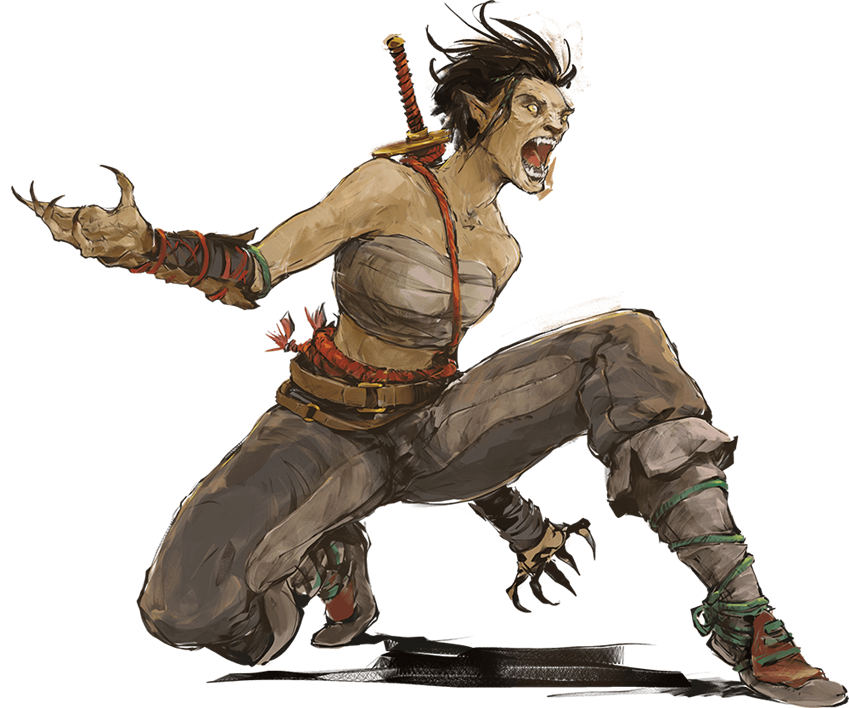
Feats
Once you’ve improved your Strength score to 18 or 20, you can increase your power with a few useful feats. The following feats are good picks for Path of the Beast barbarians, and will improve your reliability in your own desired area of expertise:
Mobile. You already get expanded movement speed from your class, and movement options from your subclass. Double down and tear across the battlefield with ease by taking this feat!
Sentinel. When you’ve got your tail out, the extended reach of your tail synergizes quite well with this feat, which wants you to make plenty of opportunity attacks.
Slasher. This new feat from Tasha’s Cauldron of Everything makes you a ferocious mauling beast when paired with two or three claw attacks per turn. The Crusher and Piercer feats are also good if you prefer to fight with fangs or a tail instead, but Slasher is head and shoulders the best of the bunch for you.
If you want more advice for building an barbarian, check out Barbarian 101. Have you ever played a Path of the Beast barbarian? What advice would you give to players that want to play this subclass? Join us next week as we dive deep into the contents of Tasha's Cauldron of Everything with Bard 101: College of Creation!
Create A Brand-New Adventurer Acquire New Powers and Adventures Browse All Your D&D Content
 James Haeck is the lead writer for D&D Beyond, the co-author of Waterdeep: Dragon Heist, Baldur's Gate: Descent into Avernus, and the Critical Role Explorer's Guide to Wildemount, a member of the Guild Adepts, and a freelance writer for Wizards of the Coast, the D&D Adventurers League, and other RPG companies. He lives in Seattle, Washington with his fiancée Hannah and their animal companions Mei and Marzipan. You can find him wasting time on Twitter at @jamesjhaeck.
James Haeck is the lead writer for D&D Beyond, the co-author of Waterdeep: Dragon Heist, Baldur's Gate: Descent into Avernus, and the Critical Role Explorer's Guide to Wildemount, a member of the Guild Adepts, and a freelance writer for Wizards of the Coast, the D&D Adventurers League, and other RPG companies. He lives in Seattle, Washington with his fiancée Hannah and their animal companions Mei and Marzipan. You can find him wasting time on Twitter at @jamesjhaeck.








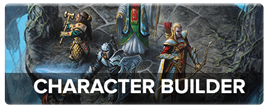
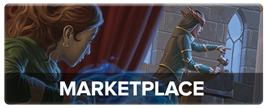
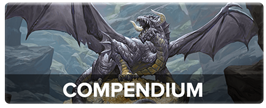
-
View User Profile
-
Send Message
Posted Dec 9, 2020Read pages 1-6 if you want to go over all the arguments in detail yet again. If you want the TL;DR version:
They are not held weapons, you need to be holding two weapons to use two weapon fighting; Dual Wielder doesn't change this.
-
View User Profile
-
Send Message
Posted Dec 9, 2020I'm thinking of making an actual spell like that.
-
View User Profile
-
Send Message
Posted Dec 9, 2020I'm referring to the use of the Dual Wielder feat. With that feat you can make an attack with your claws as a bonus action using two weapon fighting.
RAW using the two weapon fighting rules you cannot use your claws to attack as a bonus action.
-
View User Profile
-
Send Message
Posted Dec 9, 2020I'm referring to the use of the Dual Wielder feat. With that feat you can make an attack with your claws as a bonus action using two weapon fighting.
RAW using the two weapon fighting rules you cannot use your claws to attack as a bonus action.
-
View User Profile
-
Send Message
Posted Dec 9, 2020As mentioned, there are 6 pages here, almost all debate about that, as well as a thread in the forums discussing it. I won't go into it again, but TL;DR it still isn't clear, RAW.
-
View User Profile
-
Send Message
Posted Dec 9, 2020i think it's pretty clear. it shouldn't work.
-
View User Profile
-
Send Message
Posted Dec 9, 2020this is exactly it.
-
View User Profile
-
Send Message
Posted Dec 10, 2020No, you can not, even with the DW feat. Attack-wise, DW just modifies the TWF rule to not require the weapons you wield to have the Light property. That's not the issue with using claws as part of TWF. The issue is that you are not wielding / holding the claws in your hand, which is still required as part of the TWF rule, because they are in fact part of your hand.
Unless you are starring in Handception, a parody of Leonardo DiCaprio's movie Inception, from the creators of Scary Movie, coming to theatres near you on April 20th, 2021.
-
View User Profile
-
Send Message
Posted Dec 10, 2020While I need to get around to do some editing on mine, it was pretty neat to see that this subclass ended up being added to a book, as I had previously built something nearly identical to it in my homebrew campaign: The Path of the Cursed! A 'Therianthrope' rage effect, complete with natural weapon claw and bite attacks.
It also includes an Elderscrolls-inspired corpse consuming ability for self-healing and some other craziness, but the common threads were so similar! Really glad to see stuff like this making it into the mainstream, so I can enjoy content in standard games that I might've wanted in my own homebrew campaigns!
As the token forever DM of my table, knowing I might have something out of my own world accessible to me (should I ever get to play as a PC) is awesome! :)
Check out my class (and suggest edits for me, please) here!
https://www.dndbeyond.com/subclasses/243178-path-of-the-cursed
-
View User Profile
-
Send Message
Posted Dec 10, 2020Looks RAW legal to me, and if you get to Feral Instinct @ Beast 7, icing on the cake. But losing that ASI (and are you going MAD?) definitely hurts.
-
View User Profile
-
Send Message
Posted Dec 10, 2020Certainly has its draw backs when delaying barb lvls. It’s not too MAD, it just need 13 Dex and pump the rest into Str and Con. Finesse weapons (Psionic blades) can be used with Str or Dex to trigger sneak attack. You want Dex about as much as any Barbarian really.
-
View User Profile
-
Send Message
Posted Dec 10, 2020Sage Advice from the UA states that because the claws are natural weapons they are ineligible for the Dual Wielder feat or twf.
Case closed, sadly.
-
View User Profile
-
Send Message
Posted Dec 10, 2020wow .. assumptions.
UA says
The actual book adds and changes the wording to ...
How can you use a sage advice on a UA that is outdated and has different wording to "case close" it. This has noting to do with whether or not it works but you shouldnt base your answer on outdated information, imo.
They changed the wording for a reason ... that reason might not allow. Dual Wielder to work but I wouldn't assume an old UA tweet or post would be enough to close the door on it.
-
View User Profile
-
Send Message
Posted Dec 10, 2020Nothing changed in what you quoted that has any relevance to TWF or DW. So why wouldn't the SA about the first version apply to the second?
-
View User Profile
-
Send Message
Posted Dec 11, 2020simple melee weapon was added that was not in the original. You shouldn't base responses to old UA when the mechanics have changed.
-
View User Profile
-
Send Message
Posted Dec 11, 2020From your quote, it was already a melee weapon. The only change was adding simple. Since TWF / DW don't care if the weapon is simple, martial, or neither, how would the SA be affected by the addition? The mechanics didn't change in any way relevant to this topic.
-
View User Profile
-
Send Message
Posted Dec 12, 2020Apologies I made 2 actual posts and haven't figured out how to delete this one on the phone so sorry for this third one😅
-
View User Profile
-
Send Message
Posted Dec 12, 2020It didn't always say it. I'm not that sure why they changed it up but they did. Kind of makes the claws useless now
-
View User Profile
-
Send Message
Posted Dec 12, 2020Why exactly did you feel the need to change the claw from a strong butt FAR from broken ability to one that now needs it's bonus action with a feat combined to be useful. There are other ways of balancing it.
Say you cant use shilds when using 4 Attacks for example then you would balance the agro defense out and maby have an option with 3 attacks for players who wanna use shilds and one arm with a claw.
That way both dual wilding and 2 weapon fighting are possible, giving players more freedom and a useful natural weapon that isn't a tail. Not that the tail is bad it just doesn't give you much choice.
-
View User Profile
-
Send Message
Posted Dec 12, 2020For everyone confused about the number of attacks mentioned for the claws, it only grants another attack ONCE per turn. If you were level 3 or 4, you would get 2 claw attacks. One base and one additional. At level 5, it becomes 3 attacks. One base attack, one additional attack, and one Extra Attack.
I think the Dual Wielder feat would let you swing another time with your bonus action, because "Each of your hands transforms into a claw, which you can use as a weapon if it’s empty." This states that each claw is a weapon, so you are technically dual wielding, as they are defined as "a simple melee weapon". You can't swing with a bonus action unless you have the Dual Wielder feat, however, because they are not Light weapons.
So in total, one basic attack, one additional attack, one Extra attack, and one Dual Wielder bonus action attack.